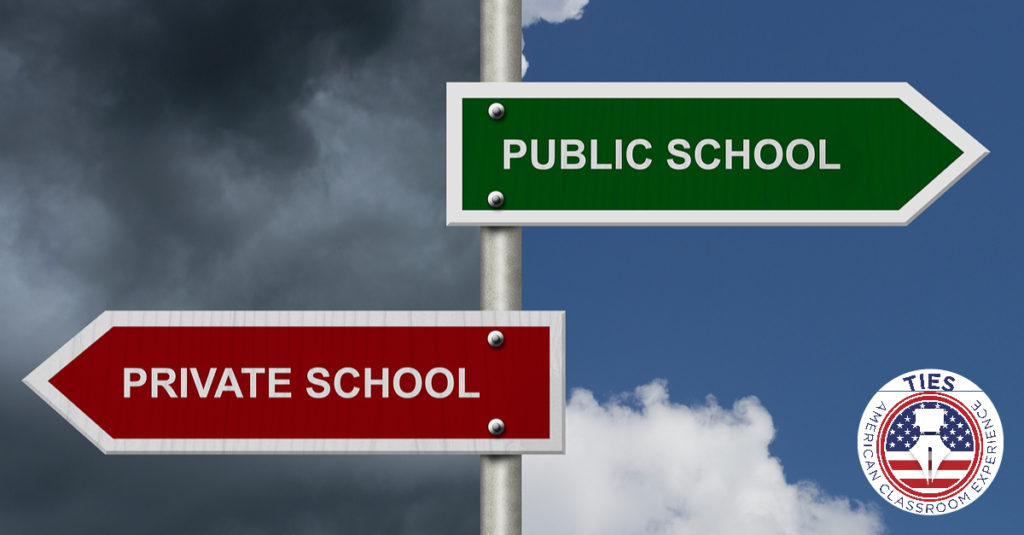
January 9, 2017
Public Vs. Private Schools in USA
To the casual observer, public and private schools in the United States might appear to be very similar, especially at the elementary school and middle school levels. However, there are actually three important differences to keep in mind when deciding if you would like to teach in a private or a public school.
Tuition
It’s impossible to discuss the differences between private schools and public schools without discussing cost. In short, public schools are free while private schools require parents to pay annual tuition. And this tuition can often be quite expensive. According to the latest statistics, the average tuition for a private day school is $17,441 while the average tuition for a private boarding school is $37,017.
Admissions
By law, U.S. public schools must admit every student who applies. The only stipulation is that the student must show proof of residency. Private schools, in contrast, have a selective admission system, in which schools can choose which students will attend based on factors that extend beyond just academic proficiency – such as ethnicity, religion and family background. As a result, public schools tend to be much more diverse and “American” than private schools, which may only reflect a very narrow sector of American society.
Curriculum and class size
Generally speaking, private schools have fewer students than public schools, and thus, can offer smaller class sizes. For some parents, this is an important factor to keep in mind, since smaller class sizes mean greater supervision and oversight by a teacher. Another key difference is that the curriculum of every public school must correspond to the standards of the state where it is based. That’s not the case with private schools, which have much greater ability to adjust the curriculum according to their needs.
Deciding where to teach
For international teachers thinking of coming to the United States to teach full-time, it often makes sense to focus on public school teaching opportunities. For one, there are more opportunities available. Public schools are bigger, can offer more subject areas, and can offer some highly specialized programs that private schools cannot.
Moreover, there are more opportunities for teachers to get involved in specialty programs in public schools – such as athletics, the arts and special needs classes. In fact, if you are planning on serving special needs children, there are very limited opportunities to do so in private schools.
Of course, there are some drawbacks to public schools, such as what many perceive to be the “bureaucratic” nature of the public educational system. Ultimately, every rule, every certification, must be signed off by the state board of education.
However, for foreign teachers coming to the United States, this is actually a huge advantage. It ensures that you are competing on a level playing field, where all the rules are known in advance. Moreover, you have very specific curriculum guidelines that can help you to adapt your current knowledge and experience for the United States.
Differences in admission, tuition and curriculum do exist between private schools and public schools. These factors will definitely shape your decision of where to teach. Ultimately, if you are looking for the classic American teaching experience, public schools offer the most compelling opportunities.
